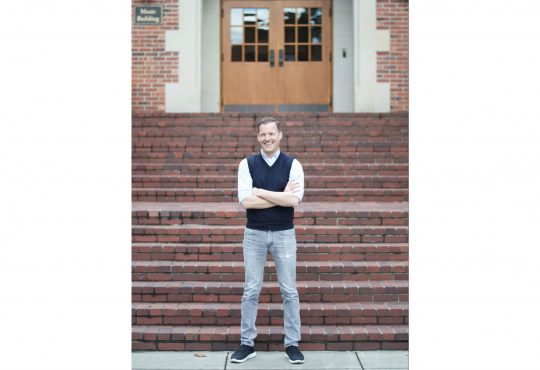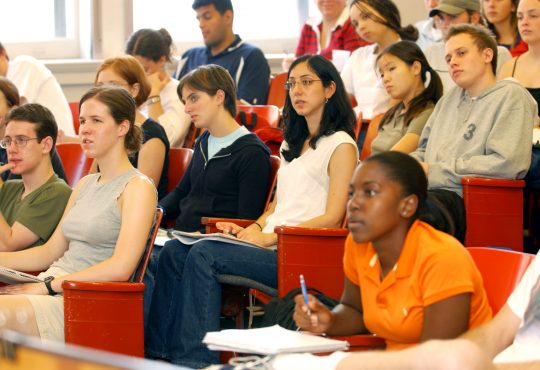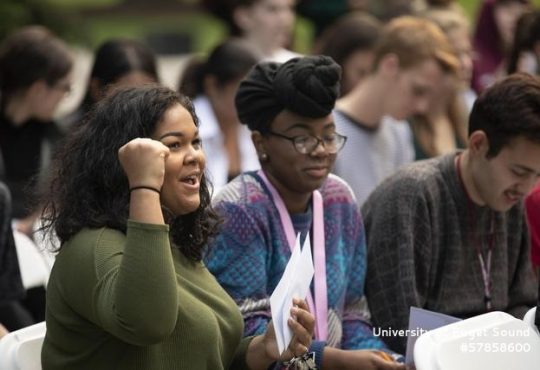The Diversity Advisory Council (DAC) has been presenting the findings of the 2012 Campus Climate Survey to Puget Sound faculty, staff and students since last year, sparking campus wide conversations about the topics related to the survey.
The Campus Climate Survey was distributed to members of Puget Sound in 2006 and 2012. It collected statistical data and written responses from members of Puget Sound who participated, which later generated information for the DAC to begin deconstructing.
The survey was organized on the subject of social diversity, defined as “characteristics that could cause groups or individuals to be systematically excluded from full participation in higher education” by the Diversity Strategic Plan.
The survey was categorized into five major areas of emphasis based on feedback from the campus community: gender, religion, socioeconomic status, political beliefs and race and ethnicity.
DAC Forum conversations were arranged to take place throughout the year on the five categories that emerged in the campus climate survey findings. Each monthly forum will consist of three sessions to accommodate the schedule of attendees.
At these sessions, DAC members present the campus climate survey findings and facilitate discussion for all members of the Puget Sound community. The next session, for the Religion forum, will be held on Nov. 22 at noon in Trimble Forum.
“People have been showing up,” Chief Diversity Officer Michael Benitez said. “The DAC forums are a way to increase participation and include voices in the process of making decisions about how to move toward actions that resolve some of the issues.”
At the end of each session action index cards are given to participants to write down potential solutions the University could adopt in order to address the issues discussed. The responses on the action index cards will then be summarized and sent to the University’s senior cabinet and community as an action plan.
The action plan will become part of the larger Diversity Strategic Plan for the University.
More detailed information on the Diversity Strategic Plan can be found on the Puget Sound website.
Some, though, are skeptical about the plan’s real-world effectiveness.
“While I applaud them for their ideals, that’s what they are: ideals,” junior Vanessa Jones said.
Others, however, are excited about the plan’s potential.
“I really like that this conversation is happening in the first place, especially about religious life on campus. I think the Diversity Advisory Council is about finding ways to create space. I really like that this is discussion-orientated because it gives the staff, faculty and students a chance to voice their opinions when normally they’re not talked about in everyday conversation. The Diversity Advisory Council is addressing issues in depth that could be perceived as shameful,” sophomore Ashley Malin said.
“It’s about changing the questions from ‘Who are you?’ to ‘What is your story?’” Malin said.
Visiting artist, slam poet and professor Mark Gonzalez held a workshop on Nov. 11 to facilitate discussions on diversity, mental health awareness and the importance of narratives.
He said that “stories are accounts of experiences; they have a beginning, an end, and characters.
“Narratives are stories put together to advance a thread of ideas.”
The University has sometimes been slow to embrace certain threads of ideas.
Whether it is steeped in diversity or other issues like sustainability practices, it takes a long narrative to enact change.
The Student Diversity Center was not established until 1996, only after students petitioned for an on-campus space to talk about personal and group identities.
As the University celebrates its 125 years of excelling “To the Heights,” the 17-year history of the Student Diversity Center is only a fraction in comparison.
One of the more noticeable issues with diversity is the lack of representation of students of color.
According to the University’s undergraduate student demographics for 2012, the amount of students who identified as white totaled 89 percent of the enrolled student body.
Native Americans and Pacific Islanders composed the smallest percent of students, followed by African Americans at three percent.
The new freshman class of 2017 follows the same trend of racial representation as in the past.
Students identify predominantly as white, totaling 71 percent of the freshmen.
The underrepresented groups from last year, combined, do not even make up one percent of the enrolled freshman class.
The statistics show that the University has plenty of room to make progress in increasing the racial diversity of Puget Sound.
The University website says it aspires “to increase the diversity of all parts of our University community through commitment to diversity in our recruitment.”
The issues surrounding diversity have been a long, continual process to address.
What students want is a safe space to discuss and room for improvement at the University.
Benitez said the DAC forums were meant to “meet the requests from the community. Not only students, but the staff and faculty as well.”
The Diversity and Inclusion Vision says “We… strive to be diverse and inclusive in every aspect of campus life.”
While this is a large ideal, it is a step towards creating an open and welcoming space for all students, faculty and staff.






